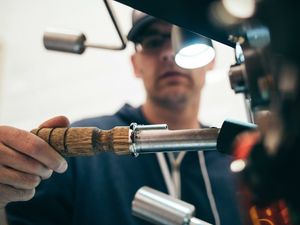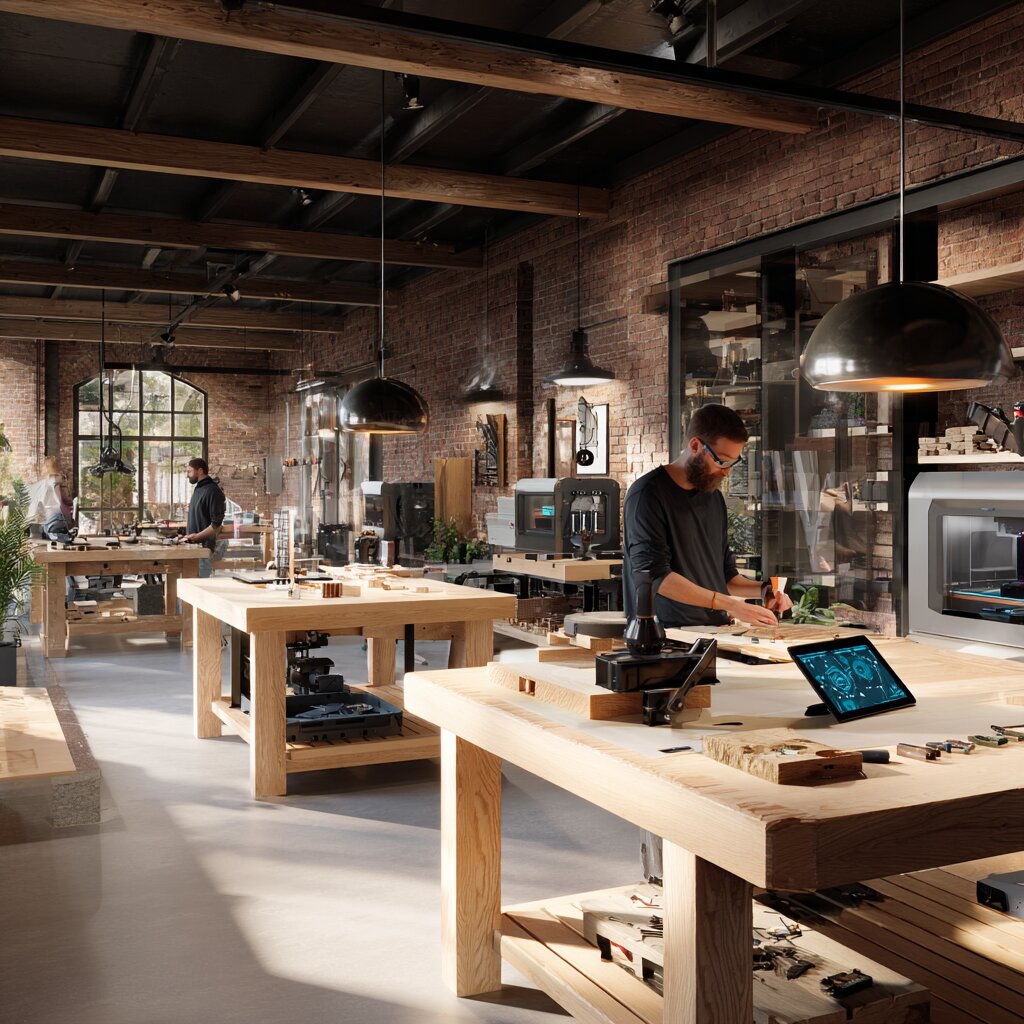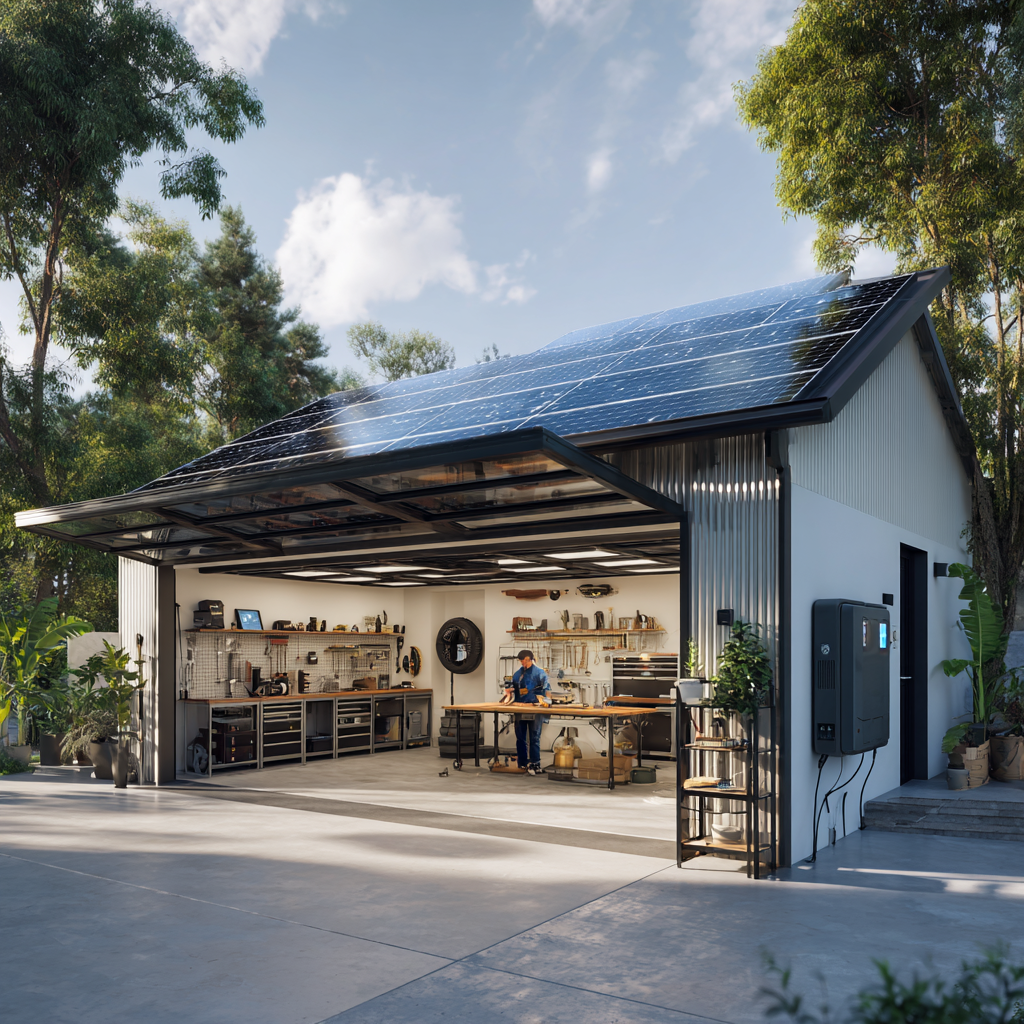DIY Acoustic Panels for Home Office with RGB Lighting
Create stylish acoustic panels that improve audio quality for video calls and give your home office a professional look. Complete with RGB LED backlighting.

Transform Your Home Into a Smart Paradise - 2025 Guide
Discover the latest smart home technology that will revolutionize your daily routine.
Working from home and bothered by echo during video calls? Or want to improve room acoustics for recording? Create designer acoustic panels that not only absorb unwanted sound but also look great thanks to RGB backlighting.
How Acoustic Panels Work
Acoustic panels work on the principle of absorbing sound waves. Porous material converts sound energy into heat through air friction in the pores. The denser and thicker the material, the better it absorbs lower frequencies.
Materials and Tools
Basic Materials:
- Wooden frames 24"x24"x2" (4-6 pieces)
- Mineral wool 24"x24"x2", density 40-60 kg/m³
- Acoustic fabric (6-9 sq ft)
- RGB LED strips (30-50 ft)
- WiFi LED controller
- 12V/5A power supply
Tools:
- Staple gun or nail gun
- Wood saw
- Drill
- Fabric scissors
- Soldering kit (optional)
Budget: $80-140 for 6 panels
Making Acoustic Panels
1. Frame Preparation
- Assemble 24"x24" wooden frames from 2"x1" strips
- Reinforce joints with brackets or dowels
- Sand and paint frames or apply finish
- Attach hanging system to back
💡 Tip: Use different frame sizes for a more interesting composition
2. Installing Absorption Material
- Carefully insert mineral wool into frame
- Ensure even distribution without gaps
- Wool should slightly overhang frame edges
- Use protective equipment when working!
⚠️ Safety: Mineral wool irritates skin and respiratory system
3. Covering with Acoustic Fabric
Choosing the right fabric is crucial:
- Fabric must be breathable (test by blowing through it)
- Cut fabric with 4" overhang on each side
- Stretch fabric over panel and secure with staples
- Start from center of each side and work toward corners
4. Integrating RGB LED Lighting
- Attach RGB LED strips to back of frame
- Run strips 2" from edge for even light distribution
- Connect all panels into one circuit
- Connect WiFi LED controller
Wiring Diagram:
Panel 1 ─┐
Panel 2 ─┼─ LED Controller ─ Power Supply
Panel 3 ─┘ │
└─ WiFi Router
Measuring Acoustics
Using Mobile Apps
Measure acoustics before and after installation using your phone:
- Android Apps: Spectroid, Sound Meter
- iOS Apps: Decibel X, Spectrum Analyzer
What to Measure:
- RT60 (reverberation time)
- Frequency spectrum
- Background noise level
🎯 Goal: Reduce RT60 to 0.3-0.5 seconds for optimal acoustics
Optimal Panel Placement
Basic Rules:
- First reflection points: Side walls at ear level
- Room corners: Where bass accumulates
- Ceiling: At least 2 panels above workspace
- Behind monitor: Reduces wall reflections
Example layout for 13'x10' room:
┌─────────────────┐
│ P3 P4 P5 │
│ │
│ P1 P2 │
│ [desk] │
│ ▽ │
└─────────────────┘
P = Panel
Programming RGB Effects
Basic Lighting Modes:
// Example for WLED firmware
{
"effects": [
{
"name": "Work Mode",
"color": "#4A90E2",
"brightness": 40
},
{
"name": "Video Call",
"color": "#FFFFFF",
"brightness": 60
},
{
"name": "Relaxation",
"effect": "Sunset",
"speed": 20
}
]
}Home Assistant Automation:
automation:
- alias: "Acoustic Panels - Work Hours"
trigger:
platform: time
at: "09:00:00"
action:
service: light.turn_on
entity_id: light.acoustic_panels
data:
brightness: 100
rgb_color: [74, 144, 226]Alternative Materials
Eco-Friendly Options:
- Cork: Natural, decorative
- Recycled textiles: Cheap, ecological
- Coconut fiber: Good absorption properties
- PET felt: Made from recycled bottles
Design Possibilities:
- Different shapes (hexagons, triangles)
- Color and texture combinations
- 3D relief surfaces
- Integrated shelves or hooks
Maintenance and Care
- Vacuum dust with soft brush
- Fabric can be washed (remove from frame)
- LED strips last 50,000+ hours
- Check connections and cables annually
System Extensions
- Bass traps: For room corners
- Diffusers: For sound scattering
- Mobile panels: On wheels for flexibility
- Integrated speaker network
Cost Comparison
| Solution | DIY Cost | Commercial Cost | Savings |
|---|---|---|---|
| 6 panels 24"x24" | $120 | $480 | $360 |
| RGB lighting | $20 | $80 | $60 |
| Installation | $0 | $120 | $120 |
| Total | $140 | $680 | $540 |
Common Mistakes and How to Avoid Them
- Too thin panels: Minimum 2" for effectiveness
- Non-permeable fabric: Test by blowing through
- Too few panels: Cover at least 25% of walls
- Poor placement: Measure and experiment
Conclusion
DIY acoustic panels are an investment that will improve not only the quality of your video calls but also the overall comfort of working from home. Thanks to RGB backlighting, you also get a unique design element that you can customize to match your mood or activity.
Have you made your own acoustic solution? Share photos and experiences! 🎙️
Smart Home Upgrade Package 2025
Transform your home with the latest smart technology
Transform Your Home Into a Smart Paradise - 2025 Guide
Discover the latest smart home technology that will revolutionize your daily routine.

